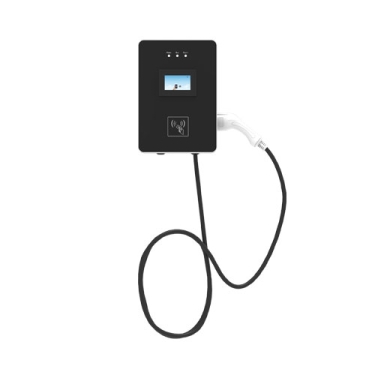-
 +86 18924678741
+86 18924678741 -
 sales@hjlcharger.com
sales@hjlcharger.com -
 Shenzhen City, Guangdong Province, China
Shenzhen City, Guangdong Province, China
Wall EV chargers can be installed in apartments, homes, blocks or commercial buildings as well as in any public area to provide EV charging.
The wall ev charger has specific control, display, and communication functions, and is a general term for charging facilities that convert AC power energy into DC power energy and transmit it to new energy electric vehicles.
Industrial design: simple and elegant appearance, stable frame design.
Quick recharge: DC fast charging, fast and convenient.
Easy to operate: supports password, card swiping, WeChat/Alipay QR code scanning, etc.
Safety protection: protection mechanisms such as over- and under-voltage protection, over-current protection, and temperature abnormality protection.
The product parameters of 20kw 30kw 40kw wall ev charger are as follows:
Parameters | Requirements | ||
General Requirements | |||
EV Charger Type | DC | ||
Charger Capacity | 20KW | 30KW | 40KW |
Equipment size | L650*W440*H190(mm) | ||
Product Model NO. | ENC-DCB020A | ENC-DCB030A | ENC-DCB040A |
ANSI-DCB020A | ANSI-DCB030A | ANSI-DCB040A | |
JIS-DCB020A | JIS-DCB030A | JIS-DCB040A | |
Mounting | Wall-Mounted | ||
Input Requirements | |||
AC Supply System | Three-Phase, 5 Wire AC system | ||
Nominal Input Voltage | AC380V±15% | ||
Input Frequency | 45-65Hz | ||
Environmental Requirements | |||
Ambient Temperature Range | -25 to 55°C | ||
Ambient Humidity | 5 to 95% | ||
Storage Temperature | -40 to 70°C | ||
Mechanical Requirements | |||
IP Ratings | IP 54 | ||
Cooling | Air-cooled | ||
Output Requirements | |||
Number of Outputs | 1 | ||
Type of Each Output | 200-1000VDC | ||
Single Output Max.Current | 66 Amp | 125 Amp | 132 Amp |
Power Factor | ≥0.99(50% load above) | ||
User Interface & Display Requirements | |||
Display & Touch-Screen Size | 7 Inches Touch Screen with Shell | ||
User Authentication | QR Code/RFID Card /Password Login | ||
Metering Information | Consumption Units | ||
Communication Requirements | |||
Communication between EVSE and Central server | Protocol (Optional) | ||
Interface between Charger and CMS | Ethernet/3G/4G/WIFI (Optional) | ||
Protection & Safety Requirements | |||
Executive Standard | IEC 62196 2017, IEC 61851 2017, SAE J1772,CHAdeMO etc. | ||
Safety Parameters | Over Current, Over Voltage, Under Voltage, Residual Current, Surge Protection, Leakage Protection, Short Circuit, Over Temperature, etc. | ||















